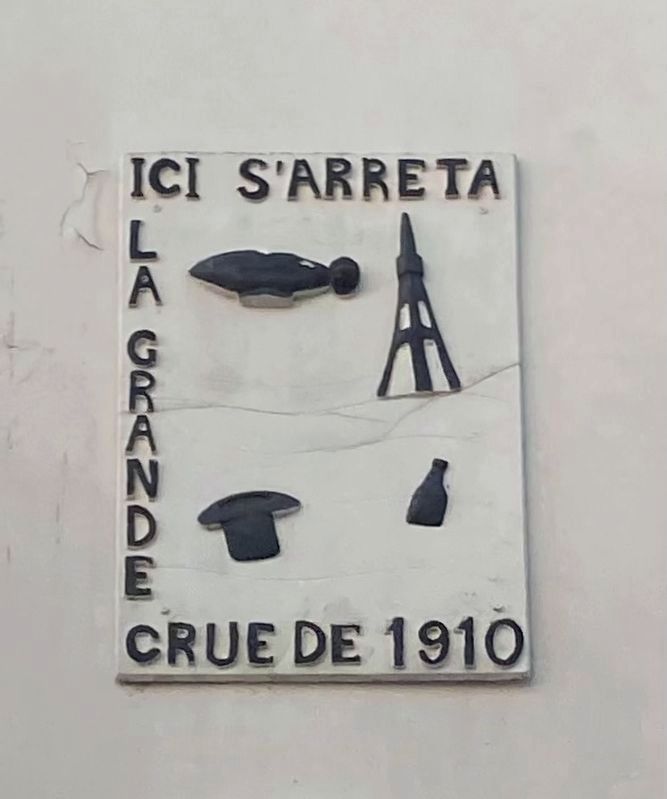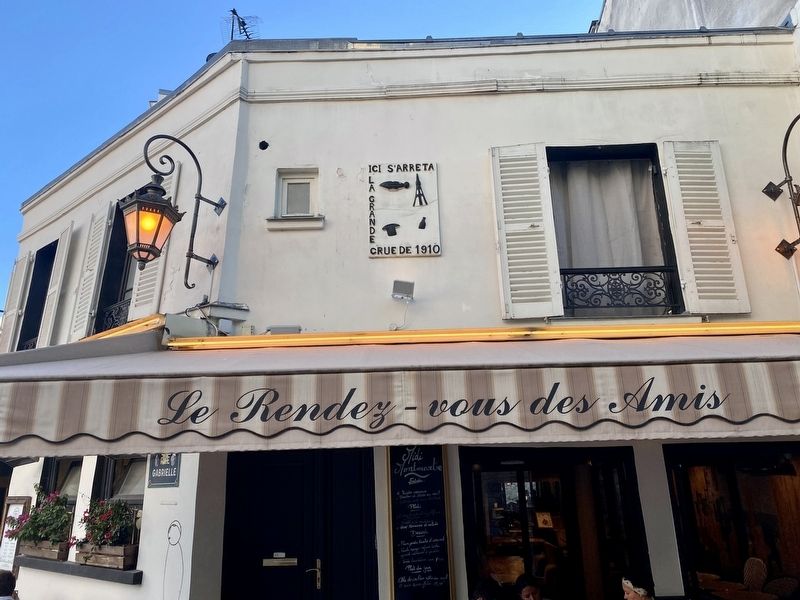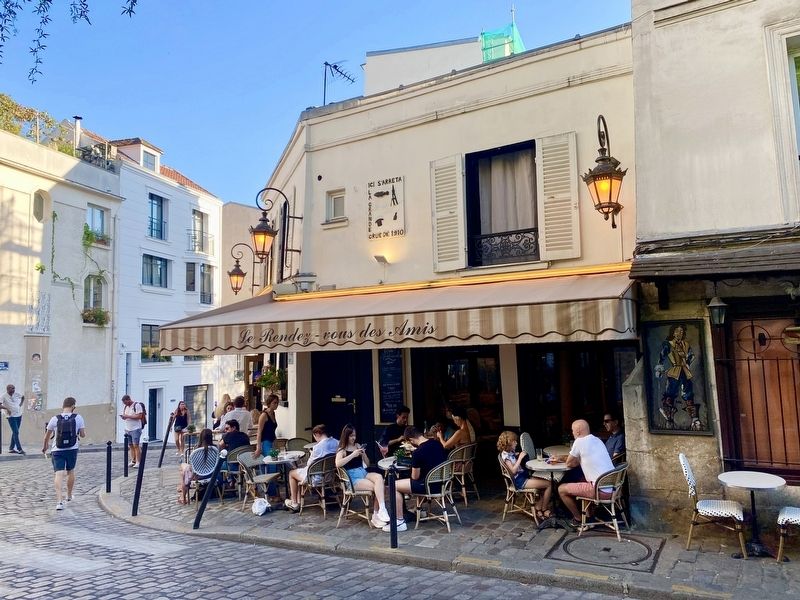Montmartre in Paris in Département de Paris, Île-de-France, France — Western Europe
La Grande Crue de 1910 / The Great Flood of 1910
Here stopped the Great Flood of 1910. (i.e., this was the high water mark)
Topics. This historical marker is listed in this topic list: Disasters. A significant historical date for this entry is January 18, 1910.
Location. 48° 53.145′ N, 2° 20.434′ E. Marker is in Paris, Île-de-France, in Département de Paris. It is in Montmartre. Marker is on Rue Gabrielle, on the left when traveling west. Touch for map. Marker is at or near this postal address: 23 Rue Gabrielle, Paris, Île-de-France 75018, France. Touch for directions.
Other nearby markers. At least 8 other markers are within walking distance of this marker. Saint-Pierre de Montmartre (about 120 meters away, measured in a direct line); Georges Clemenceau (about 120 meters away); Le dispensaire de Clemenceau / Clemenceau’s Dispensary (about 120 meters away); Picasso (about 120 meters away); La basilique du Sacré-Cœur (about 150 meters away); Le Bateau-Lavoir (about 210 meters away); Square Louise-Michel (about 210 meters away); La maison de Rose de Rosimond (about 210 meters away). Touch for a list and map of all markers in Paris.
Also see . . . Crue de la Seine de 1910 (Wikipedia, in French).
On the devasting cultural impact the flooding had on Parisian artists (in translation): …As the artists were particularly concentrated in the Montmartre district, one of the lowest areas in the city, the arts world was devastated. Pablo Picasso, whose studio was nearby (see nearby markers), had his studio wrecked and lost many canvases and painting supplies. As he was a young artist and paints were expensive, for a couple of years thereafter he painted only using various shade of blue, as it was only his paints containing cobalt blue pigments that were able to survive the flood (cobalt blue is extremely stable). Years later, when asked his feelings about the flood, he replied, “Si je dois expliquer la blague, alors ce n'est pas drôle!”(Submitted on April 1, 2023.)
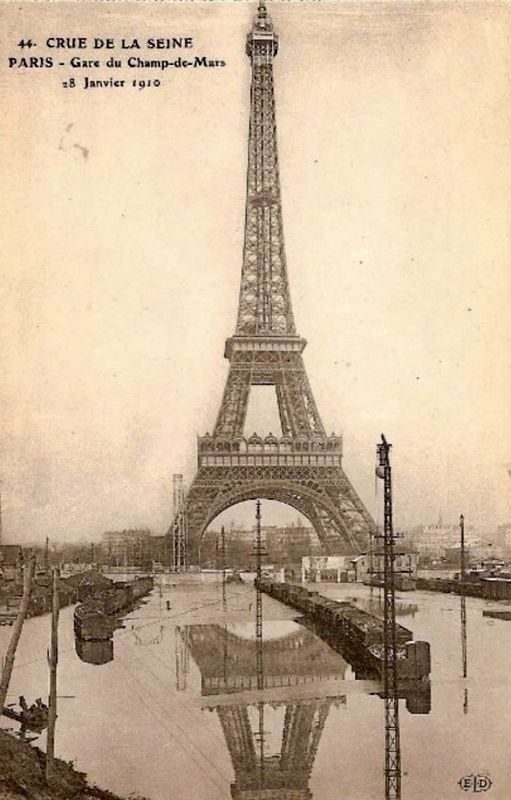
Photographed By Lavette Rêves et fils, January 28, 1910
4. Eiffel Tower in the flood
Picture showing the Eiffel Tower surrounded by water. The flooding happened so quickly that dozens of people were trapped in the tower, not only by the water itself, but also from the loss of power, which meant that the elevators did not run. The situation became dire enough that the people trapped in the tower had to be rescued by dirigible, as depicted on the marker.
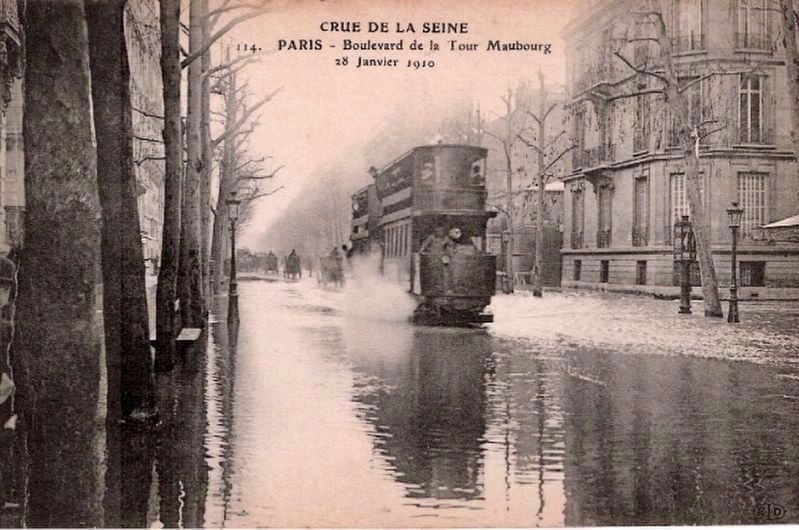
Photographed By Farfelu Trompé et cie, January 28, 1910
5. Tram System in the Great Flood of 1910
Although normal rail service was disrupted, tram service was able to be maintained by the fitting of hydrostatic accumulators to the trams. These devices were able to keep the trams on the tracks by capturing the excess water pressure from the rotation of the wheels that would have otherwise pushed the tram upwards, thus derailing it. At speed, sufficient pressure built up such that the accumulators would relieve the pressure by streaming jets of water out to the side, as seen here in the photo.
Credits. This page was last revised on April 1, 2023. It was originally submitted on April 1, 2023. This page has been viewed 277 times since then and 45 times this year. Photos: 1, 2, 3, 4, 5. submitted on April 1, 2023.
